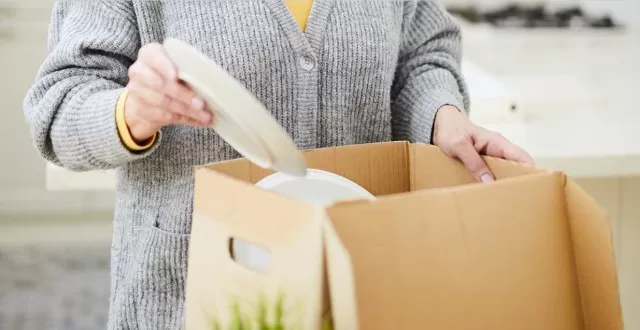Swedish Death Cleaning, derived from the Swedish term “döstädning,” may initially sound ominous, but its true purpose revolves around decluttering.

The concept merges the notions of death (dö) and cleaning (städning), emphasizing the importance of organizing and letting go of unnecessary possessions.
While Swedish death cleaning certainly acknowledges the connection to mortality, its primary aim is to create a more manageable and enjoyable living environment for both yourself and your loved ones.
By engaging in Swedish death cleaning, you not only alleviate the burden of excess belongings on your own life but also spare your family and friends from having to deal with an overwhelming task in the future.
It is an act of consideration and care, ensuring that the possessions you leave behind are meaningful and manageable for those who will eventually handle them.
Rather than dwelling on the morbid aspects, Swedish death cleaning serves as a practical and proactive approach to living a more organized and intentional life.
It encourages you to evaluate the things you own, reflect on their value and significance, and make conscious decisions about what truly matters. In this way, Swedish death cleaning becomes an opportunity for self-reflection, gratitude, and creating a more streamlined living space that aligns with your values and priorities.
Ultimately, Swedish death cleaning is about embracing the present moment, acknowledging the transient nature of life, and taking proactive steps to create a more harmonious and clutter-free environment.
By engaging in this method, you not only make life easier for yourself but also leave behind a legacy of mindful living and consideration for those who will navigate the process after you’re gone.
Swedish Death Cleaning Ways to Declutter

What Is Swedish Death Cleaning?
Swedish death cleaning, as introduced by Margareta Magnusson in her book “The Gentle Art of Swedish Death Cleaning: How to Free Yourself and Your Family from a Lifetime of Clutter,” is a concept that focuses on removing unnecessary belongings and organizing your home to be nice and orderly, especially as you approach the later stages of life.
The main idea behind death cleaning is to prepare for the inevitable and reduce the burden on your loved ones when you pass away.
While the name may sound morbid, Swedish death cleaning is not solely limited to the elderly or those facing imminent death.
It can be applied at various stages of life, such as during a relationship transition, downsizing, or when managing the belongings of a deceased family member. The goal is to simplify and declutter your living space, making it easier for both yourself and your loved ones.

Decluttering Strategies from Swedish Death Cleaning.
Swedish death cleaning offers practical strategies for decluttering that can be applied to anyone’s home.
Here are some key points to consider:
Know When to Begin: Magnusson suggests that around the age of 65 is a good time to start death cleaning.
At this age, you are likely physically capable of undertaking the task, and you have sufficient time to invest in the process. Signs that it might be time for you to declutter include struggling to fit items into storage spaces or feeling overwhelmed by the state of your home.
Start with Simple Tasks: Begin your death cleaning journey with simpler tasks to experience quick success and maintain motivation.
Magnusson recommends starting with larger, impersonal items like furniture and gradually working towards smaller, sentimental possessions like photographs. This approach allows you to ease into the process without becoming overwhelmed by sentimental attachments or the sheer volume of items.
Recognize What to Discard: The main objective of Swedish death cleaning is to eliminate unnecessary belongings.
To determine what to keep and what to let go of, evaluate the abundance of certain items, assess their value and relevance in your life, and consider if someone else would benefit more from having them. Decluttering is about creating a living environment that is more streamlined and efficient.
Ask for Help: Informing others that you are engaged in the process of death cleaning can serve as both an accountability measure and an opportunity for assistance.
Whether you need physical help with tasks or want to offer items to family and friends, communicating your intentions can foster support and facilitate a smoother decluttering experience.
Get Rid of Your Things: Donating, selling, and discarding items are common methods of disposing of belongings during Swedish death cleaning.
Research donation options in your area to ensure your items go to the right places. Gift-giving can also be a way to pass on sentimental items to loved ones while you are still alive.
However, it’s important to be considerate of the recipient’s preferences and lifestyle choices.
Save What Matters Most: Designate a box labeled “throw-away” to distinguish items that hold personal value to you but may not have the same significance for others.
This allows you to keep sentimental items without burdening your loved ones with their future disposal.
Swedish death cleaning emphasizes the importance of decluttering and organizing to create a more manageable living space.
By implementing these strategies, you can free yourself from the weight of unnecessary possessions and make the process of handling your belongings easier for your family in the future.
*The information is for reference only.